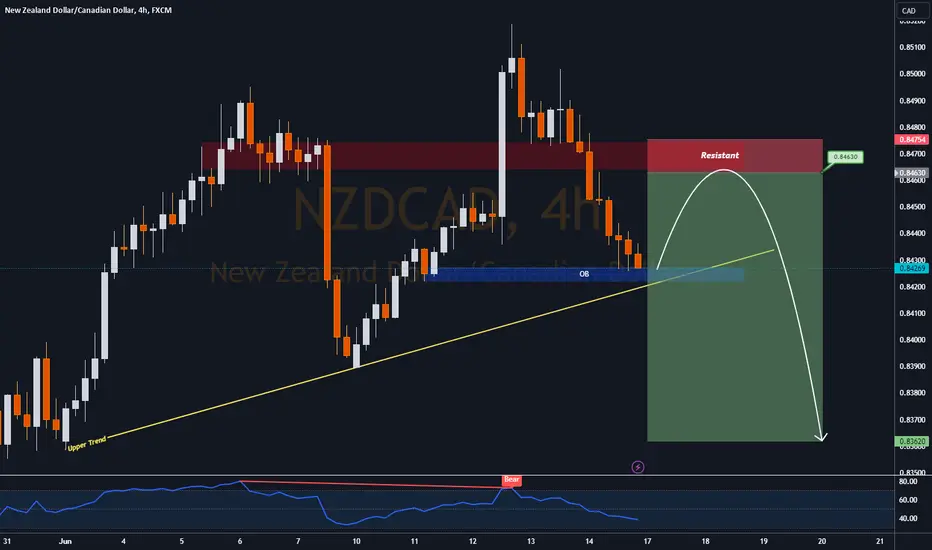NZD/CAD currency pair, specifically looking to enter around the 0.84630 level after a correction from an overbought (OB) area. Here are a few points to consider based on your statement:
Correction from Overbought Area: If the price is currently in an overbought condition, it may indicate that a correction or pullback is likely. Traders often look for these corrections to enter trades in the direction of the longer-term trend.
Entry Point: You mentioned an expected entry point of 0.84630. It's important to have a clear strategy for entering the trade, whether it's based on technical indicators, price action signals, or a combination of factors. Ensure your entry point aligns with your overall trading plan.
Stop Loss: Setting a stop loss is crucial to manage risk. It's good practice to determine your stop loss level before entering the trade based on your risk tolerance and the technical analysis of the market. This helps protect your capital in case the trade moves against you.
Trade Management: Consider your profit target and how you plan to manage the trade once it's open. This could include trailing stops, scaling out of positions, or exiting at predefined levels of support/resistance.
Market Conditions: Always be aware of broader market conditions, economic news, and geopolitical events that could impact currency pairs. These factors can influence price movements and should be factored into your trading decisions.
Remember, trading involves risk, and it's essential to have a well-defined trading plan, including entry and exit strategies, risk management techniques like stop losses, and an understanding of the factors influencing the market you're trading.
Correction from Overbought Area: If the price is currently in an overbought condition, it may indicate that a correction or pullback is likely. Traders often look for these corrections to enter trades in the direction of the longer-term trend.
Entry Point: You mentioned an expected entry point of 0.84630. It's important to have a clear strategy for entering the trade, whether it's based on technical indicators, price action signals, or a combination of factors. Ensure your entry point aligns with your overall trading plan.
Stop Loss: Setting a stop loss is crucial to manage risk. It's good practice to determine your stop loss level before entering the trade based on your risk tolerance and the technical analysis of the market. This helps protect your capital in case the trade moves against you.
Trade Management: Consider your profit target and how you plan to manage the trade once it's open. This could include trailing stops, scaling out of positions, or exiting at predefined levels of support/resistance.
Market Conditions: Always be aware of broader market conditions, economic news, and geopolitical events that could impact currency pairs. These factors can influence price movements and should be factored into your trading decisions.
Remember, trading involves risk, and it's essential to have a well-defined trading plan, including entry and exit strategies, risk management techniques like stop losses, and an understanding of the factors influencing the market you're trading.
Disclaimer
The information and publications are not meant to be, and do not constitute, financial, investment, trading, or other types of advice or recommendations supplied or endorsed by TradingView. Read more in the Terms of Use.
Disclaimer
The information and publications are not meant to be, and do not constitute, financial, investment, trading, or other types of advice or recommendations supplied or endorsed by TradingView. Read more in the Terms of Use.
